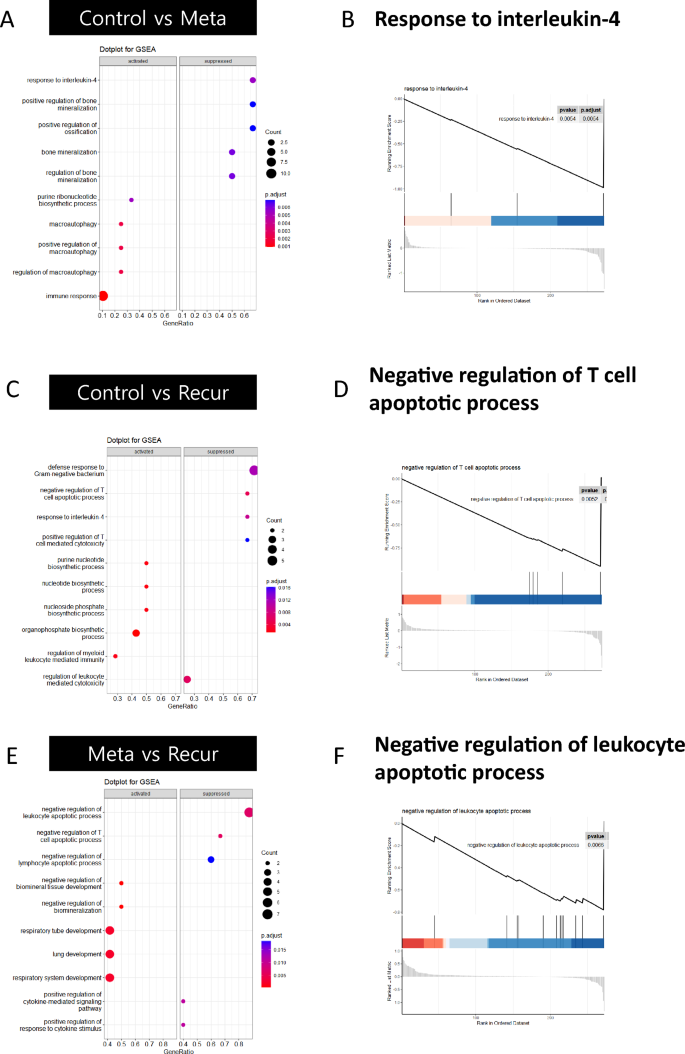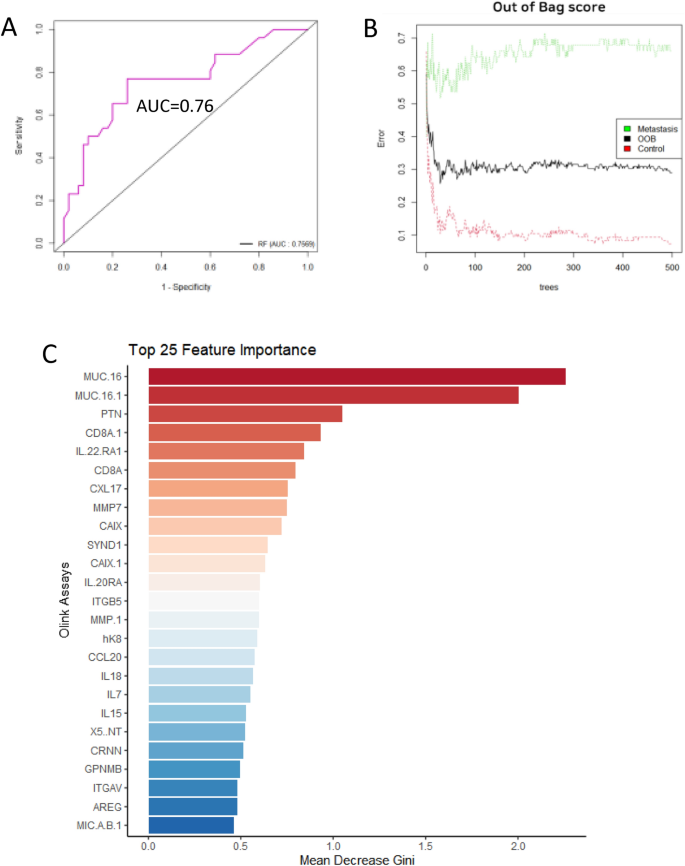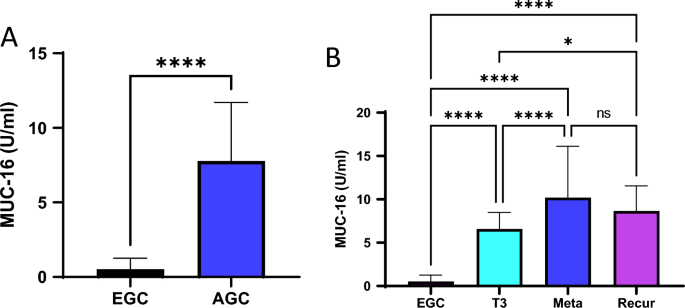Cohort inhabitants
Metastasis and recurrence are necessary elements that lower survival time in AGC. If metastasis or recurrence could be predicted, extra aggressive therapy for GC is feasible. To find protein markers that may predict metastasis or recurrence on the serum degree, 176 serum samples from sufferers with T stage 3 or greater illness had been collected and divided into 3 teams. The recurrence group included circumstances the place the identical sort of tumor reappeared in the identical space or in one other organ after therapy, as indicated by medical follow-up data. The metastasis group included circumstances the place tumors had developed in different organs on the time of surgical procedure, primarily based on medical info. The management is a gaggle with out metastasis or recurrence. This examine included sufferers with T stage 3 or greater GC with out metastasis and recurrence (Management, n = 98), metastatic GC (Meta, n = 56), and recurrence serum from sufferers with recurrent GC (Recur, n = 22) (Fig. 1). Desk 1 exhibits the clinicopathological traits of the examine cohorts. Within the management group, the intestinal and diffuse varieties had been 40% and 48%, respectively. Within the metastasis group, Lauren’s classification couldn’t be recognized in 75% of circumstances, and the diffuse sort was recognized in 77% of circumstances within the recurrence group. TNM stage II and III had been present in 40% and 60% of circumstances within the management group, respectively, however stage III was present in 82% of circumstances within the recurrence group. All metastasis group circumstances had been labeled as stage IV. Reasonably differentiated tubular adenocarcinoma (30%) and poorly differentiated tubular adenocarcinoma (29%) had been most steadily noticed within the management group, and poorly cohesive carcinoma (36%) and combined carcinoma (23%) had been steadily noticed within the relapse group. MSS sort, EBV-negative and HER-2-negative had been commonest in all three teams.
Serum-based proteomic evaluation
On this examine, we analyzed the degrees of 276 marker proteins in key immune, oncology and irritation pathways by PEA utilizing the Olink Goal 96 Immuno-Oncology, Goal 96 Oncology II and Goal 96 Irritation panels (Supplementary Fig. S1). Three proteins are included in all three panels. A listing of proteins utilized in every panel is proven in Supplementary Desk S1. Comparability of protein ranges in every group confirmed the dynamics of serum proteomics. Eight out of 279 proteins confirmed a major change in every group (Fig. 2). Amongst them, Mucin-16 (MUC16), carbonic anhydrase 9 (CAIX), 5’-nucleotidase (5’NT) and T-cell floor glycoprotein CD8 alpha chain (CD8A) had been considerably elevated in metastatic GC sufferers in contrast with the management topics. Moreover, MUC16, CAIX, 5’-NT, CD8A, and GPNMB proteins had been considerably decreased within the recurrence group in contrast with the metastatic group. Curiously, when stratified by intercourse, MUC16 confirmed a major improve solely within the feminine metastatic sufferers (Supplementary Fig. S2).
NPX comparability with eight statistically important proteins. The management group refers to nonmetastatic sufferers. The most important distinction in NPX values between the Management and Meta teams is proven with the Mucin-16 (MUC16) protein assay. Statistically important variations are denoted in opposition to teams. The edge of the nonparametric evaluation of variance methodology was an adjusted P worth of < 0.05.
Gene set enrichment evaluation (GSEA)
Gene set enrichment evaluation (GSEA) confirmed that the hallmark pathways had been altered within the metastasis and recurrence teams in contrast with the management group (Fig. 3). The purposeful that means of upregulated MUC16 includes activated and suppressed important alteration pathways such because the adverse regulation of the T cell apoptotic course of and the response to interleukin-4 within the Metastasis group related to most cancers cell proliferation and malignant phenotypes15, comparable to migration and invasion. On the similar time, GSEA demonstrated that the Management group was remarkably enriched in regulating myeloid leukocyte-mediated immunity. Moreover, the mobile response to decreased oxygen ranges and hypoxia-related pathways had been additionally enriched within the metastasis group in contrast with the management group (Fig. 3A, B and Supplementary Fig. S3A). Furthermore, the adverse regulation of the T-cell apoptotic course of and the regulation of leukocyte-mediated cytotoxicity had been considerably enriched within the Recurrence group, whereas the Management group was enriched within the organophosphate biosynthetic course of and the regulation of myeloid leukocyte mediated immunity (Fig. 3C, D and Supplementary Fig. S3B). These outcomes collectively symbolize a notable distinction in leukocyte immunity between teams. As well as, leukocyte- or lymphocyte-related processes had been noticed within the recurrence group in comparison with the metastasis group; however, the tissue improvement pathway was elevated within the metastasis group in comparison with the recurrence group (Fig. 3E, F and Supplementary Fig. S3C). Our findings of recognized organic pathways demonstrated that the Metastasis and Recurrence teams with a better expression of MUC16, the extra important discrepancy of the Metastasis group, in comparison with the Management group confirmed that most cancers improvement performed an necessary function in metastasis and that innate immunity performed an necessary function in recurrence.
Considerably enriched Gene Ontology (GO) phrases. Dot plots and enrichment plots primarily based on GSEA outcomes present GO organic processes on the vertical line, and the realm of the circle signifies gene counts. The P worth is represented with the depth of colours. The fitting and left panels denoted as activated and suppressed point out that represented teams have extra activated pathways with greater protein expression ranges. (A), (B) Comparability between Management and Meta teams with the enriched pathway ‘Response to interleukin-4’. (C), (D) Comparability between Management and Recur teams with the enriched pathway ‘Damaging regulation of T-cell apoptotic course of’. (E), (F) Comparability between Meta and Recur teams with the enriched pathway ‘Damaging regulation of leukocyte apoptotic course of’. R packages had been used to generate the plots.
A random forest classification mannequin
To judge the random forest mannequin, we estimated an space underneath the curve (AUC) of 0.76 for the invention cohort, and this info is illustrated in Fig. 4A. The out-of-bag (OOB) error of the established random forest mannequin was calculated primarily based on the nonselected samples from the metastasis and management teams on the iteration of the random forest algorithm. This info is illustrated in Fig. 4B. A speedy lower within the OOB error estimation was noticed from the start to the thirtieth tree, which was the variety of bushes used within the mannequin. The variety of bushes was optimum at 500 in our random forest mannequin for the reason that OOB rating was steady after 500. The general OOB was roughly 29% when the variety of bushes was 500.
A random forest classification mannequin utilizing the five hundred bushes constructed on the coaching and check datasets of the metastasis and management teams resulted in essentially the most predictive potential for MUC16. The protein assays are listed in descending order with the rating of the imply lower Gini. This represented the significance of the characteristic, whereas the small values had been barely influential within the discovery mannequin. Out of the 276 whole protein assays, MUC16 was clearly essentially the most helpful (imply lower Gini > 2.0) for predicting prometastatic gastric most cancers as plotted with the very best imply lower Gini (Fig. 4C). The Immuno-Oncology and Oncology II panels had similar MUC16 protein assays that led to duplicated names within the plot. Though two completely different panels had been used at completely different time factors, each MUC16 assays from these panels indicated that MUC16 was an important biomarker predictor within the random forest mannequin. This mannequin was visualized as a scaled boxplot for the 25 proteins in keeping with the results of the characteristic significance.
The diagram of the decision-tree mannequin for the metastasis and management samples is illustrated in Supplementary Fig. S4. The choice tree methodology was used for classification for the reason that efficiency was higher than that of different strategies16. It was proven as a tree construction with three sorts of nodes, a call node, a leaf node and an inside node, and was developed with the nonparametric algorithm for 276 protein assays in 154 sufferers. The ultimate branches on the backside of the tree represented the output by way of the choice. MUC16 additionally dominated this determination tree mannequin, as proposed within the different analyses.
MUC16 as a prometastatic prediction marker in GC serum
CEA and CA19–9 had been demonstrated to be prognostic elements for gastric most cancers17,18. Supplementary Desk S2 exhibits the preoperative CEA and CA19-9 ranges in 176 sufferers. Though the measured CEA values elevated throughout metastasis or relapse, they had been inside the regular vary (0 ~ 5) on common, and roughly 17% of every group had values out of the conventional vary (> 5). Furthermore, the common CA19-9 degree was considerably elevated in roughly 25% of metastatic sufferers, and 33% of the recurrence group was out of the conventional vary (> 37).
We additional evaluated the prognostic worth of the MUC16 degree within the GC serum samples. First, the expression degree of MUC16 (CA125) within the serum of EGC and AGC sufferers was measured with ELISA. The MUC16 degree was elevated by 15-fold within the AGC samples in comparison with the EGC samples (Fig. 5A). Moreover, the MUC16 unit was elevated by 20-fold within the metastasis group and by 16-fold within the recurrence group in comparison with the EGC group (Fig. 5B). Within the TCGA abdomen most cancers tissue information, the mRNA expression degree of MUC16 was considerably elevated in keeping with stage (Supplementary Fig. S5A). Nevertheless, there was no important distinction in survival charges when it comes to MUC16 expression at every stage within the TCGA information (Supplementary Fig. S5B).
Analysis of the prognostic worth of the MUC16 degree in GC serum. (A) The expression degree of MUC16 in serum samples from EGC (n = 46) and AGC (n = 246) sufferers was measured with ELISA. (B) MUC16 unit elevated within the metastasis group (n = 69) and the recurrence group (n = 22) in comparison with the AGC group (n = 155) with out metastasis and recurrence. P values lower than 0.05 are given one asterisk, and P values lower than 0.0001 are given 4 asterisks. ns means P > 0.05.




